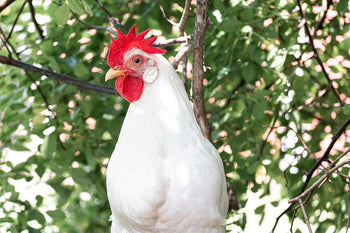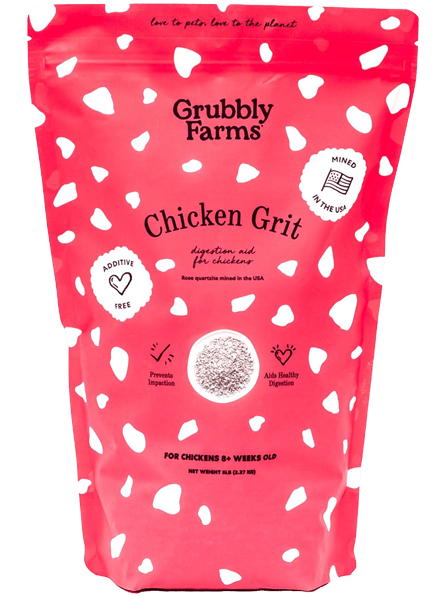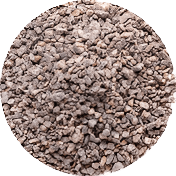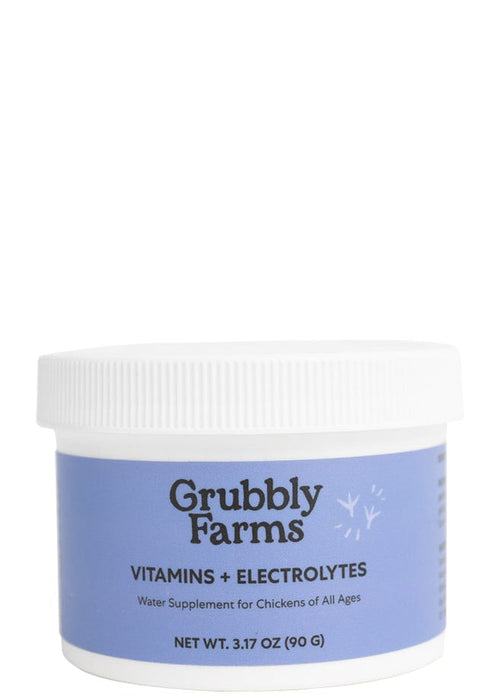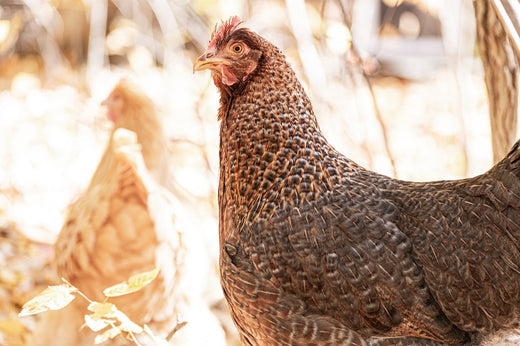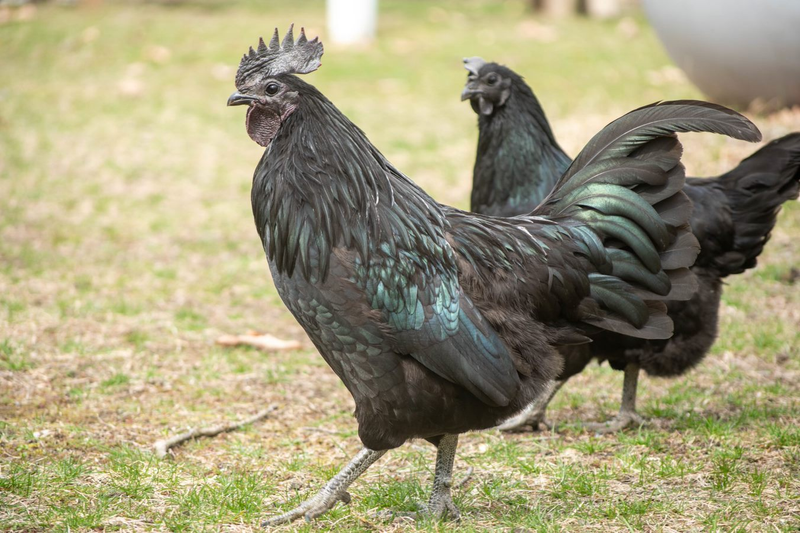Leghorns have been made popular through the commercial egg industry, but are they a good fit for the backyard flock? Learn more about this chicken breed in this breed deep dive!
The first thing that may come to mind when you think of the leghorn chicken is the commercial egg industry. Thanks to this breed’s amazing egg laying abilities, leghorns have become a popular choice when high quantities of white eggs are needed. However, there is so much more to the leghorn chicken than just eggs! These quirky birds have traits that make them self-sufficient, independent, and smart. Find out if leghorns would be a good fit for your backyard flock!
Leghorn Chicken Characteristics
Leghorns are a medium size chicken originating from Italy. They were first recognized by the American Poultry Association in 1874 and were placed in the Mediterranean breed class. A standard size leghorn cock weighs around 6 lbs. and a standard size hen weighs about 4.5 lbs. A bantam variety is also recognized in the single comb, clean legged bantam class or the rose comb, clean legged bantam class. Bantam leghorn cocks weigh about 26 oz. and bantam hens weigh about 22 oz.
Different strains of leghorns can be classified as either industrial or heritage. Industrial leghorns are a strain of the white leghorn that have been developed specifically for use in the commercial egg industry. However, since they are superb egg layers, industrial strain white leghorns have also become popular as a backyard breed choice as well. Heritage leghorns are closer to their original ancestors and can be any of the recognized breed varieties including white. They are still excellent egg layers and tend to be hardier than industrial leghorns.

Leghorn Appearance
Leghorns are commonly recognized in their white variety by their characteristic pure white feathers and bright red comb. All leghorns have bright red, single combs that are medium to large in size. A leghorn’s comb should have 5 distinct points. In cocks, all 5 points should stand upright. In hens, the first point should be upright, and the remaining points should droop to one side, called a lopped comb. Leghorns also come in a rose comb variety. Rose comb leghorns should have a bright red rose comb that is medium in size. The rose comb should have a square front ending with a well-developed spike off the back.
A leghorn’s wattles should also be bright red and should be medium to large in size. Their earlobes should be oval and white in most leghorn varieties. A leghorn’s eyes are a deep reddish in color and the beak, shanks, and toes should be yellow in most varieties. Leghorns are a 4-toed, clean legged chicken breed.
Leghorns have been recognized in many different color varieties. Barred, black, buff, buff Columbian, Columbian, dark brown, exchequer, light brown, silver, and white are recognized varieties in both single comb leghorns and rose comb leghorns. Additionally, single comb leghorns are recognized in black-tailed red, blue, golden, mille fleur, and red varieties. Rose comb leghorns are recognized in the Dominique variety as well.
Leghorn Egg Production
One of the leghorns' best known traits is its reputation as a superb egg producer. Leghorns are known to produce well over 300 eggs per year, with many hens laying nearly an egg a day for the first 2 years of their life. Industrial strain leghorns can average about 6 eggs a week and heritage leghorns will lay around 4-5 eggs a week.
Since the white leghorn variety has been developed as an industrial variety, they are known to be the best egg producing variety of the leghorn breed. However, all varieties will lay large, white eggs regularly. Since the leghorn was developed for the main purpose of egg production, the hens will rarely go broody. They tend to start laying around 18-20 weeks of age and will take a break around 1.5-2 years of age for their first annual molt.
Leghorns are not only popular because of their reliability, but they are also known to have one of the best feed-to-egg conversion ratios. Meaning, they eat less feed than other chicken breeds in comparison to how many eggs they produce. This makes them an efficient and economical breed to raise for eggs. Even the bantam leghorns have a reputation as being the best layers of any bantam breed.

Leghorn Hardiness
Leghorns are both heat tolerant and cold hardy to a certain degree. Since they were developed in a more temperate region (Italy), they are more heat tolerant than they are cold hardy. With their small body size, clean legs, and large comb and wattles, leghorns are less prone to heat stress and heat-related issues. Their large combs and wattles help with thermoregulation and expel excess body heat during hot weather.
Single comb leghorns are not as cold hardy as rose comb leghorns. Their large, single combs are more prone to frostbite during cold weather, whereas rose comb leghorns have short, blunt combs that don’t get frostbite as easily. Despite their proneness to frostbite, leghorns are still good wintertime layers. They will often lay well for their first or second winter and will continue to lay well if provided with supplemental light during the shorter winter days.
Leghorns adapt better to warm climates than they do to cold climates. However, you can take some measures to help leghorns adapt to cold weather if you live in a northern region. Winterizing the coop and taking frostbite preventative measures are important when raising leghorns in northern regions. They need protection from exposure to winter weather and wind chill, which will help prevent frostbite and help them conserve body heat. A properly ventilated coop with an insulating litter can also help leghorns adapt to cold weather.
White vs Brown Leghorns
Two of the most common varieties of leghorns are the white leghorn and the brown leghorn. There are both light brown and dark brown leghorns, which are two separate varieties with different appearances.
White leghorns have pure white plumage with bright red combs and wattles. They have white earlobes and yellow beaks, shanks, and toes.
Light brown leghorns have orange/golden/yellow head and hackle (neck) feathers with black highlights. The plumage on the front of the neck is black in cocks and salmon in hens. The rest of the body plumage is dark brown to black with a black tail. Cocks have orange red to golden colored wings with black highlights.
Dark brown leghorns have a deep, reddish brown plumage color with black highlights and a greenish sheen to their feathers.
White leghorns, light brown leghorns, and dark brown leghorns all have similar temperament traits. They are all independent and active, but can be friendly and docile when handled from a young age. The main differences in these varieties is when it comes to egg production. Since many white leghorns have been bred for the commercial egg industry, they tend to be the better egg producers of any of the leghorn varieties. Light brown and dark brown leghorns are considered heritage varieties of the leghorn breed. They are often harder to find and source than white leghorns. While light and dark brown leghorns may not out lay a white leghorn, they are still excellent egg producers and tend to be hardier with a longer laying life than white leghorns.
Caring for Leghorn Chickens
Caring for leghorns doesn’t vary much from caring for other chicken breeds. Leghorn chicks need a safe brooder to be raised in for the first 4-5 weeks of their life. The brooder should be well-ventilated and have enough space to accommodate the chicks as they grow. There should be a supplemental heat source in the brooder such as a heat lamp or a radiant heater. The brooder litter should be soft and absorbent. Low perches can be introduced after the chicks are 4 weeks old to prevent any cases of bumblefoot from roosting at too young of an age.
The brooder should be cleaned regularly to prevent the litter from becoming too saturated and to help control ammonia fumes and harmful pathogens. You will need to increase the brooder size as the chicks grow. Leghorn chicks will need their supplemental heat source for at least the first 4 weeks of their life. Once the leghorn chicks are fully feathered, they should no longer need the supplemental heat. Young leghorns can stay outside in a safe coop once they are fully feathered, and the temperatures remain consistently above 55°F.
Leghorn chicks should be fed chick starter feed that contains between 18-20% protein. They can stay on starter feed up until they are 18-20 weeks old, then they should be switched to layer feed. You can choose to use a grower feed after the chicks are 6-8 weeks old. Grower feed is lower in protein so it is often less expensive than starter feed. When making feed switches, make the switch gradually to avoid causing any digestive upset that can occur from a sudden change in protein levels.
Leghorn chicks can be fed healthy snacks in moderation. Starting off, feed them healthy, natural foods like chopped oats, scrambled eggs, or crushed grubs. Offer the snacks in small amounts and in small particle sizes so that the foods are easier for small beaks to consume. Forage and leafy greens can also be introduced into their diet starting at a young age. Make sure you supply chick grit for young leghorn chicks whenever you are feeding them anything other than chick starter feed.
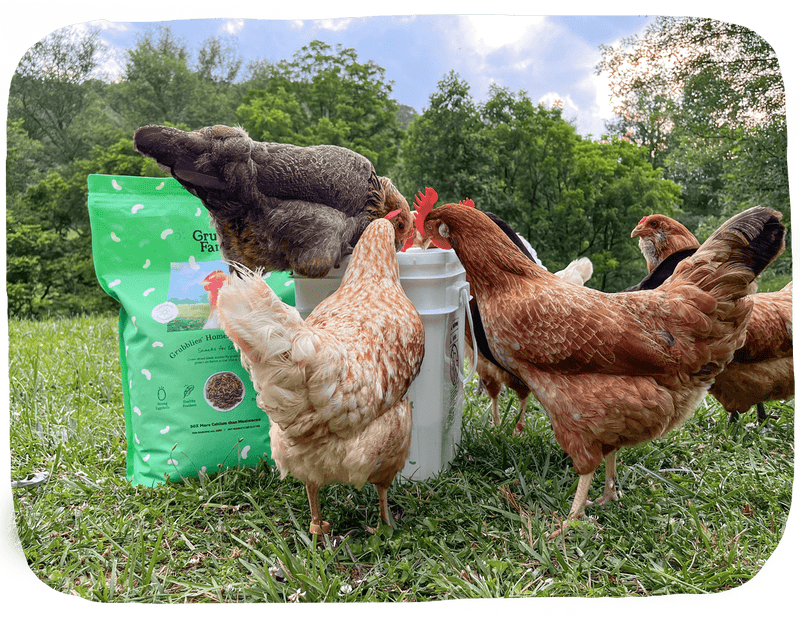
Grubblies
A healthy treat for your flock
With 50x more calcium than mealworms, treat your flock with Grubblies and help support strong eggshells.
Shop NowLeghorn chicks should have access to food at all times and they should always have fresh, clean water available to them.
Once the leghorns are old enough to move outside, they should be housed in a safe, predator-proof chicken coop. The coop should be spacious, well-ventilated, and naturally lit. The coop should have soft, absorbent litter and it should be kept clean on a regular basis. There should also be 1 nesting box for every 4-5 leghorn hens. Leghorns prefer elevated nesting boxes, but the nesting boxes should still be lower than the roosts.
Since leghorns are a lightweight chicken breed, they don’t require as much coop space as heavier breeds. Leghorns need 4 square feet of coop space per bird. However, leghorns do benefit from more run space than other chicken breeds since they are very active. Leghorns need anywhere from 10-20 square feet of run space per bird.

Another caveat to raising a light breed chicken is the fact that leghorns love to fly! Roosts inside the coop can be as high as you can install them since leghorns will naturally seek out the highest places to roost in the coop. Make sure you supply at least 8” of roost space per leghorn. Leghorns love outdoor roosts in their run too! Since leghorns are good flyers, the run will need to be covered if you plan on keeping your leghorns confined. A 10 foot enclosure fencing may be enough to contain some leghorn hens, but others will quickly realize they can fly over even tall fencing.
Leghorn laying hens need to be fed a complete, balanced layer feed that contains at least 16% protein. While layer feed should constitute most of their daily diet, leghorn hens can also be fed healthy snacks and treats. Stick with natural snacks like grubs, leafy greens, and fruits on a frequent basis and feed other treats in moderation. Leghorns will also forage for most of their own diet if given the chance.
Leghorn hens should have access to a free-choice calcium supplement, like crushed oyster shells, at all times. Supplemental calcium is necessary so hens can consume additional calcium as needed to prevent calcium from being drawn from their bones for forming eggshells. Supplemental grit may also be necessary if your flock doesn’t have access to a natural source of grit. Your flock should always have fresh, clean drinking water as well.
To keep your leghorns healthy, you should perform regular health checks and work on keeping the coop clean. Monthly health checks on each bird can help you catch any signs of illness before they become serious. A clean coop and run will prevent ammonia fumes from causing respiratory issues and prevent bad bacteria from proliferating. Remove droppings, soiled litter, or damp litter from the coop litter regularly.
Once leghorns reach their second summer, they will go into a molt. Molting is the natural process of losing old, worn feathers and growing in fresh, new feathers. Hens will usually start to mold in late summer and into the fall. During this time, many hens will stop laying as they put energy into growing new feathers. Feed your leghorns a diet higher in protein during this time to facilitate the growth of new feathers. You can feed them high protein snacks or switch them over to a high protein starter feed (20% protein) during molting season.
Lastly, leghorns benefit from enrichment. They are a very active breed who benefit from natural stimulation to keep them from resorting to bad behaviors due to boredom. Letting your leghorns free-range is a great way to allow them to entertain themselves. However, if free-ranging isn’t option, keep their enclosure fun and interactive using various perches, logs, stumps, and benches. Leghorns are known to be very smart and they enjoy interactive chicken toys like treat balls, chicken swings, and even obstacle courses!
Common Health Issues
Leghorns are a hardy chicken breed and they are not prone to specific diseases. However, there are some health concerns you should keep in mind to help you keep your leghorns healthy and productive:
- External Parasites- Leghorns can get external parasites, like mites and lice, which can cause stress and is unhealthy for the hen. When performing regular health checks, look around the vent area for signs of external parasites. Ensuring that your flock has a place to dust bathe is a great way to prevent external parasites from becoming an issue!
- Egg Binding- Leghorn hens are known to lay progressively larger eggs as they age. As the eggs get larger, it can make a hen more prone to egg binding. You can help prevent egg binding in your hens by making sure they have access to free-choice calcium and minimizing stress factors.
- Frostbite- Frostbite is a concern for leghorns during cold, winter weather. Their large combs and wattles can collect moisture which can then freeze on the skin and lead to frostbite. You can prevent frostbite by applying a beeswax-based salve to the combs and wattles to repel moisture. Make sure the coop is well-ventilated to prevent moisture build-up in the air. Protection from exposure can help prevent frostbite caused by wind chill factors.
- Cancer- Industrial strains of leghorns are more prone to reproductive cancer due to poor genetics and overbreeding for egg production. Source your leghorns from reputable breeders if you want to avoid cancer in your flock.
- Organ Failure- Organ failure is another health concern in industrial strain leghorns. Being in high egg production mode all the time taxes the hen’s body and makes her more prone to organ failure. Poor breeding and overbreeding for high production also makes industrial hens more prone to organ failure.
Leghorn Lifespan
The average lifespan of a leghorn is around 5-7 years, however, some individuals can live well beyond that when well-bred and cared for! There is a difference in lifespan between heritage bred leghorns and industrial bred leghorns.
Industrial strain leghorns are bred for high egg production. Breeders focus on production over other traits such as longevity. That, combined with the industrial hen’s proneness to cancer or organ failure, makes for a shorter average lifespan than heritage strain leghorns. Heritage strain leghorns are bred with more focus on longevity, hardiness, sustainability, and healthy genetics.
Both heritage strain leghorns and industrial leghorns will lay the best for the first 2 years of their life. Industrial leghorns will lay very proficiently and then rapidly decrease in productivity. Heritage strain leghorns tend not to lay as proficiently, but they will often lay very well up into their fourth and even fifth year of production.
Factors that play a role in the lifespan of a leghorn include breeding, diet, care, and overall health.

Suitability for Backyard Flocks
Leghorns are often thought of as the industrial chicken breed, but they can make a great addition to the backyard flock as well! However, there are some factors to consider when deciding whether leghorns will be a good fit for your backyard.
Here are some of the traits that make leghorns suitable for a backyard flock:
- Mature quickly
- Excellent layers
- Adapt to confinement or free-range
- Good foragers
- Hens won’t brood
- Hardy
- Intelligent
- Roosters make good flock protectors
Despite all those excellent traits, there are some other traits that you must consider that may rule leghorns out for your flock. Leghorns are a very active and independent chicken breed. They will not be the chickens who cuddle with you or show affection. They prefer to go about their business while you go about yours. That’s not to say they aren’t friendly, they certainly are curious and friendly, but they just aren’t docile or affectionate.
Leghorns are great flyers and tend to be noisy as well. If you can't afford to have chickens escaping from their pen and have no way of covering the run, then leghorns may not be the best choice. Leghorns will quickly learn how to fly out of fenced enclosures. The hens also tend to be talkative and noisy, so they are not ideal for quiet, urban flocks.
Lastly, if you have limited space or want to raise chicks using a mother hen, then leghorns will not fit the bill. Despite being a smaller chicken breed, leghorns appreciate having plenty of space to explore. They can adapt to confinement, but their confinement has to have plenty of space for each bird to prevent boredom behaviors from cropping up. Also, the instinct to brood and raise chicks has been practically bred out of leghorns, so the hens rarely ever go broody, which can be either a pro or a con depending on your purpose for raising chickens.
Conclusion
Leghorns are a great chicken breed choice if you want a small bird that is economical to raise and lays plenty of large, white eggs for you to enjoy! They often have quirky personalities and are quick, smart, and active. Leghorns are independent and do great in a homestead setting where they are left to their own devices. If leghorns sound like a good fit for your flock, give them a try and be ready for cartons of large, fresh eggs to enjoy!





